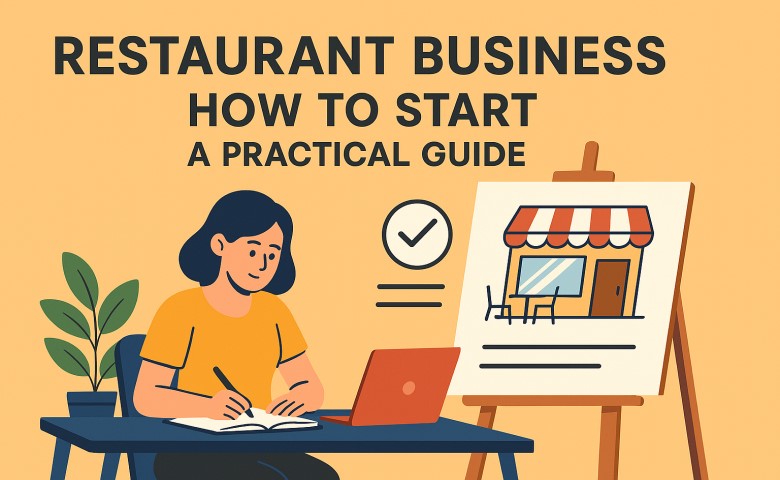Table of Contents
Opening a Restaurant Business has always been a dream for many aspiring entrepreneurs. In 2025, the food industry continues to evolve, shaped by new technology, changing customer expectations, and smarter business models. Whether you’re launching a fast-casual spot, a fine dining venue, or a food truck, this guide breaks down the essential steps to help you start your restaurant business successfully.
1. Define Your Restaurant Concept
Start with a clear vision. What kind of restaurant do you want to open? This includes:
- Cuisine: Italian, vegan, Asian fusion, BBQ?
- Service Style: Fast food, casual dining, fine dining, buffet?
- Target Audience: Students, professionals, families, tourists?
Your concept should match both your passion and a real market need in your chosen location.
2. Write a Solid Business Plan
Restaurant Business plan isn’t just for banks and investors it’s for you. It helps you clarify:
- Your concept and unique selling point (USP)
- Startup costs and funding sources
- Market analysis and target customers
- Menu pricing strategy
- Staffing needs and marketing plans
- Financial forecasts (break-even point, profit margins, etc.)
3. Choose a Great Location
Location can make or break your restaurant. Look for:
- High foot traffic
- Visibility from main roads
- Accessibility and parking
- Proximity to your target customers
- Reasonable rent compared to your revenue potential
For 2025, also consider delivery zones for online orders.
4. Handle Legal Requirements
Before you serve your first dish, make sure you’re compliant. You’ll likely need:
- Business license
- Food service establishment permit
- Health department approval
- Liquor license (if applicable)
- Fire and safety inspections
- Employer Identification Number (EIN)
Regulations vary by state and country, so check with local authorities.
5. Secure Financing
Starting a Restaurant Business isn’t cheap. Common funding options include:
- Personal savings
- Business loans
- Private investors or partners
- Crowdfunding
- Small Business Administration (SBA) loans
In 2025, many startups also use fintech platforms or restaurant incubators to raise funds.
6. Design a Smart Menu
Your menu is your most powerful marketing tool. Keep it:
- Focused: Avoid a cluttered, confusing list
- Profitable: Include high-margin items
- Easy to prep: Fewer ingredients = lower costs
- Aligned with your brand: Consistency matters
Use QR codes for digital menus and integrate with POS systems for easier updates.
7. Hire and Train Your Team
Staffing is one of the biggest challenges in hospitality. You need:
- Chefs/cooks
- Front-of-house staff (waiters, hosts)
- Cleaners
- Manager (if not you)
- Delivery staff (if in-house)
Invest in training to ensure consistency, safety, and great customer service.
8. Build a Strong Online Presence
In 2025, people find restaurants online before walking in. Make sure you:
- Build a professional website with your menu, hours, and contact info
- Claim and optimize your Google Business Profile
- Stay active on social media (Instagram, TikTok, Facebook)
- Register on delivery apps (DoorDash, Uber Eats, Grubhub)
- Encourage online reviews
9. Set Up Tech Systems
Modern restaurants rely on technology to run efficiently. Key tools include:
- POS system for orders and payments
- Inventory management software
- Online reservation tools
- Loyalty programs and CRM
- Kitchen display systems
Automating routine tasks frees up time to focus on food and service.
10. Market Before You Open
Don’t wait until opening day to spread the word. Use:
- Social media countdowns
- Pre-opening tasting events
- Influencer invites
- Local media and PR
- Email lists for early offers
Build buzz so people are lining up on day one.
Final Thoughts
Starting a Restaurant Business in 2025 is challenging but entirely possible with planning, commitment, and adaptability. Focus on building something people love, not just something trendy. Stay consistent, learn from your customers, and always strive for better.
Ready to start? Take the first step today by writing down your restaurant concept. Everything else flows from there.

